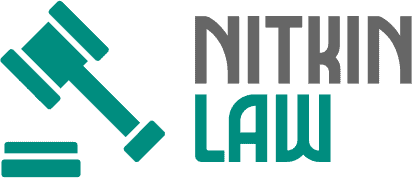
You’ve been injured in an accident and want to know what happens next?
The legal process of personal injury lawsuits becomes even more overwhelming when you’re simultaneously managing your injuries and recovery treatments. Knowledge of process steps provides a significant advantage despite its complex appearance.
Each year in the United States 39.5 million people who experience personal injuries seek medical treatment indicating you share this path with countless others. This number amounts to 126.3 cases per 1,000 individuals.
I will guide you step-by-step through the complete process of personal injury lawsuits.
Key Insights Ahead:
- Understanding Personal Injury Claims
- The Timeline of a Personal Injury Case
- Gathering Evidence for Your Case
- Working With Personal Injury Lawyers
- Settlement vs. Trial: What’s Best for You
- Compensation Types in Personal Injury Cases
Understanding Personal Injury Claims
Personal injury claims involve legal battles that occur when an accident or injury causes harm to someone who believes another party holds legal responsibility for that harm.
These cases can range from:
- Car accidents
- Slip and fall incidents
- Medical malpractice
- Workplace injuries
- Product liability cases
- Dog bites
What makes a valid personal injury claim? Personal injury claims require two essential elements to stand.
1. Negligence: The injury that you sustained occurred because another party neglected to demonstrate appropriate care.
2. Causation: The injuries and damages you suffered were a direct result of their negligence.
When a driver violates a red light and crashes into your vehicle their negligent behavior constitutes the cause of your injuries. The combination of negligence and direct causation results in a simple personal injury claim.
Every year more than 400,000 personal injury claims get filed across the United States through state court systems. The majority of personal injury lawsuits reach a pre-trial settlement without going to court. Personal injury lawyers understand how to utilize this knowledge during negotiations with insurance companies.
The Timeline of a Personal Injury Case
One of the biggest questions most clients have is: “How long will my case take?”
The honest answer? The duration of your personal injury case depends entirely on how complex it is. The resolution time for personal injury cases ranges from a few months to several years. This timeline provides you with a basic understanding of what to expect.
- Medical Treatment (Ongoing): Your health comes first. Always seek immediate medical attention.
- Consultation with Attorney (1-2 Weeks): Choosing the appropriate attorney should take about two weeks.
- Investigation Phase (1-6 Months): During the investigation phase your attorney will collect evidence along with medical documentation and obtain statements from witnesses.
- Demand Package (1-2 Months): After you reach maximum medical improvement your attorney will proceed to send a demand letter.
- Negotiation Period (1-3 Months): Back-and-forth negotiations with the insurance company.
- Filing a Lawsuit (If Necessary): If settlement negotiations fail.
- Discovery Phase (6-12 Months): Both sides exchange information.
- Mediation/Settlement Conference: A number of courts mandate mediation before they can establish a trial date.
- Trial (Several Days – Several Weeks): If your case goes to trial.
Remember, this timeline is just an estimate. Some lawsuits conclude through settlements shortly after filing while others extend over a longer period especially when they reach trial. The plaintiff wins over 90% of personal injury cases which proceed to trial.
Gathering Evidence for Your Case
The quality of your personal injury claim depends mostly on the evidence you collect. A comprehensive collection of evidence ensures a stronger standing in your case.
Here’s what you need to collect:
- Medical Records serve as official records of your injuries along with the treatments you received and your future health outlook.
- Accident reports include documentation from police reports, workplace incident reports, and property incident reports.
- Collect photographic evidence of your physical injuries as well as the accident location and any damaged property.
- Witness Statements consist of contact information and personal accounts from individuals who observed the accident.
- You must maintain proof of lost earnings through pay stubs as well as tax documents or written confirmation from your employer.
Collecting evidence must start right after the accident occurs. If it is possible to do so capture photos of the accident scene while also collecting witness contact information and maintaining comprehensive records of medical treatments and expenses.
Working With Personal Injury Lawyers
Choosing the appropriate attorney plays a vital role in achieving success for your case. The intricate nature of personal injury law means that an experienced professional can substantially affect the final result of your case.
Specialized personal injury lawyers make a difference because they bring expertise and resources to your case.
- These lawyers have knowledge of personal injury law and they can adapt their expertise to your specific legal needs.
- They have the expertise to determine the exact value of your case.
- They possess effective negotiation techniques to deal with insurance companies.
- They maintain professional relationships with medical experts plus investigative professionals.
Choose an attorney with personal injury law expertise who has demonstrated success in past cases operates on contingency fees and communicates effectively.
The majority of personal injury lawyers provide complimentary initial consultations to potential clients. During this time ask the attorney about their professional experience and their proposed approach to managing your case.
Settlement vs. Trial: What’s Best for You
U.S. private industry employers reported around 2.6 million nonfatal workplace injuries and illnesses in 2023 showing an 8.4% reduction compared to the prior year. Most of these cases reached settlements instead of trials.
Let’s break down both options:
Settlement Benefits:
- Certainty: You know exactly what you’ll receive
- Speed: Typically faster than going to trial
- Settlements reduce emotional strain by preventing courtroom battles
- Settlements minimize the financial burden by reducing both legal representation fees and court-related expenses.
Trial Benefits:
- Juries have the chance to award compensation that exceeds the initial settlement offer.
- Experiencing a courtroom trial helps achieve emotional closure for plaintiffs.
- Details about the defendant’s negligence become part of the public record during trial proceedings.
You should make the settlement versus trial decision together with your attorney after evaluating the strength of your evidence alongside liability clarity and your personal financial requirements.
Compensation Types in Personal Injury Cases
When filing a personal injury claim you may receive different types of compensation.
1. Economic Damages
- Medical Expenses encompass all expenditures associated with your medical care.
- Lost Wages represent the money you forfeit because you are unable to work.
- Loss of Earning Capacity represents your reduced future earning potential.
- Property Damage refers to the expenses needed to fix or substitute properties that sustained damage.
The calculation of economic damages involves both current costs and anticipated expenses in the future.
2. Non-Economic Damages
- The physical pain you endure as a result of the injuries you sustained.
- Emotional Distress describes the mental conditions such as anxiety and depression that develop after an injury.
- You can no longer find pleasure in your usual activities or hobbies.
- Loss of Consortium refers to how your injuries affect your ability to maintain a relationship with your spouse or family.
The calculation of non-economic damages usually involves the “multiplier method” which multiplies economic damages by a severity factor or the “per diem” approach.
Navigating Your Personal Injury Journey
Understanding the lawsuit process allows you to manage personal injury claims confidently even though they can be overwhelming. The legal system maintains comprehensive procedures to assist you in seeking justice because there are almost 400,000 personal injury claims filed each year.
Remember these key points:
- Document everything related to your injury
- Seek medical attention immediately
- Reach out to a seasoned personal injury attorney as soon as possible
- Understand that resolving your case requires patience because legal processes take time.
- Make decisions by evaluating financial aspects alongside emotional considerations.
A personal injury lawsuit will present challenges yet proper information and legal representation enable you to pursue fair compensation while prioritizing your recovery and well-being.

